“You know, Tony’s ass is better looking than yours,” designer Orry-Kelly once told Marilyn Monroe about her Some Like It Hot costar Tony Curtis during a costume fitting.
“Oh, yeah?” the legendary blonde bombshell answered. “Well, he doesn’t have tits like these!” Monroe pulled open her blouse, baring her breasts. Rarely had an actress so unequivocally won a one-upmanship contest with the Aussie designer. Orry-Kelly was as well known in Hollywood for his acerbic jibes as he was for his amazing costumes. “Hell must be filled with beautiful women and no mirrors,” he used to quip.
Born in Kiama, sixty miles south of Sydney, on December 31, 1898, Orry-Kelly was openly gay. His father, William Kelly, was a tailor, and his stay-at-home mother, Florence Perdue Kelly, was a passionate carnation grower. Her son loved to say that he took Orry-Kelly as his professional name because his mother “always thought of me as her little flower.” But on other occasions, the designer would claim that Orry Kelly was his birth name, and that studio publicists had added a hyphen to make him appear “more exotic.” The truth was, he was born George Orry Kelly, and went by Jack. As far as hyphenation-happy publicists and carnation-breeding mothers, well, Orry-Kelly thought nothing of tweaking the truth, as long as it made an otherwise dull story seem clever.
In Kiama, the woman who ran the local theater took a liking to young Jack. At age ten, he began acting in plays and designing sets. Recognizing their son’s flair for sketching and painting, the Kellys sent him to live with family friends in Sydney, where he studied art. He was quick to capitalize on the adventures afforded him by a local aristocrat who took the future designer under his wing. His mysterious benefactor dressed Jack in beautiful sailor suits and Lord Fauntleroy jackets with big lace collars and took him to the theater and the best restaurants. He later learned that his patron was actually a con artist, using him to distract his victims while he picked their pockets. Orry-Kelly never bore a grudge for the exploitation, he said years later. After all, he had a great time.
By 1920, Orry-Kelly was ready to leave Australia. His father gave him passage money to London. Armed with letters of introduction, experience in Sydney’s theater district, and four years of working in his father’s tailoring shop where he learned to hand-paint neckties, Orry-Kelly confidently believed he would make it big in London as a theatrical costume designer. He was soon dismayed after making the rounds with no one showing any interest at all. His Australian accent, which in 1920s London was considered déclassé, worked against him. As his money dwindled, he gave up, and set sail for New York. It was 1922.
While beating on doors of theatrical offices in New York, Orry-Kelly met a young struggling actor named Archie Leach. To save expenses, the future designer and the future Cary Grant decided to rent a loft together in Greenwich Village. The day they met, the duo ran into Charlie Phelps, a young performer who Orry-Kelly had known in Sydney. Phelps agreed to move in with the men, enabling them to split the bills three ways.
Orry-Kelly struggled at first. He worked as a waiter, a salesclerk, a hotel clerk, and even escorted ladies to tea dances in order to make ends meet. He also painted neckties, which Grant sold on the street. “Cary always said that he learned to act selling my ties,” Orry-Kelly would later say. “If he sold a lot of them, he was doing a really good job acting and if he didn’t sell many, then he wasn’t acting very well.” The third roommate fared better more quickly. Known on stage as Charlie Spangles, Phelps quickly booked work at a nightclub in Greenwich Village. His novel act included a routine where he donned a special costume split down the middle. When he turned in profile to the left, he appeared as a man, and to the right, as a woman.
Phelps’s good fortune led to Orry-Kelly’s. The owner of the club where Phelps worked hired the untested designer to redecorate another of his Greenwich Village locales. The re-designed room became a big hit. That small success led to assignments designing sets and costumes for a stage revue. He was hired to design for George White’s Scandals and for the Shubert Organization, and to paint borders for silent movie titles for Fox East Coast studios. But his costume design work for comedienne Nora Bayes, and actresses Ethel Barrymore and Katharine Hepburn in her Broadway debut, soon eclipsed his other talents. He found himself in demand as a costume designer.
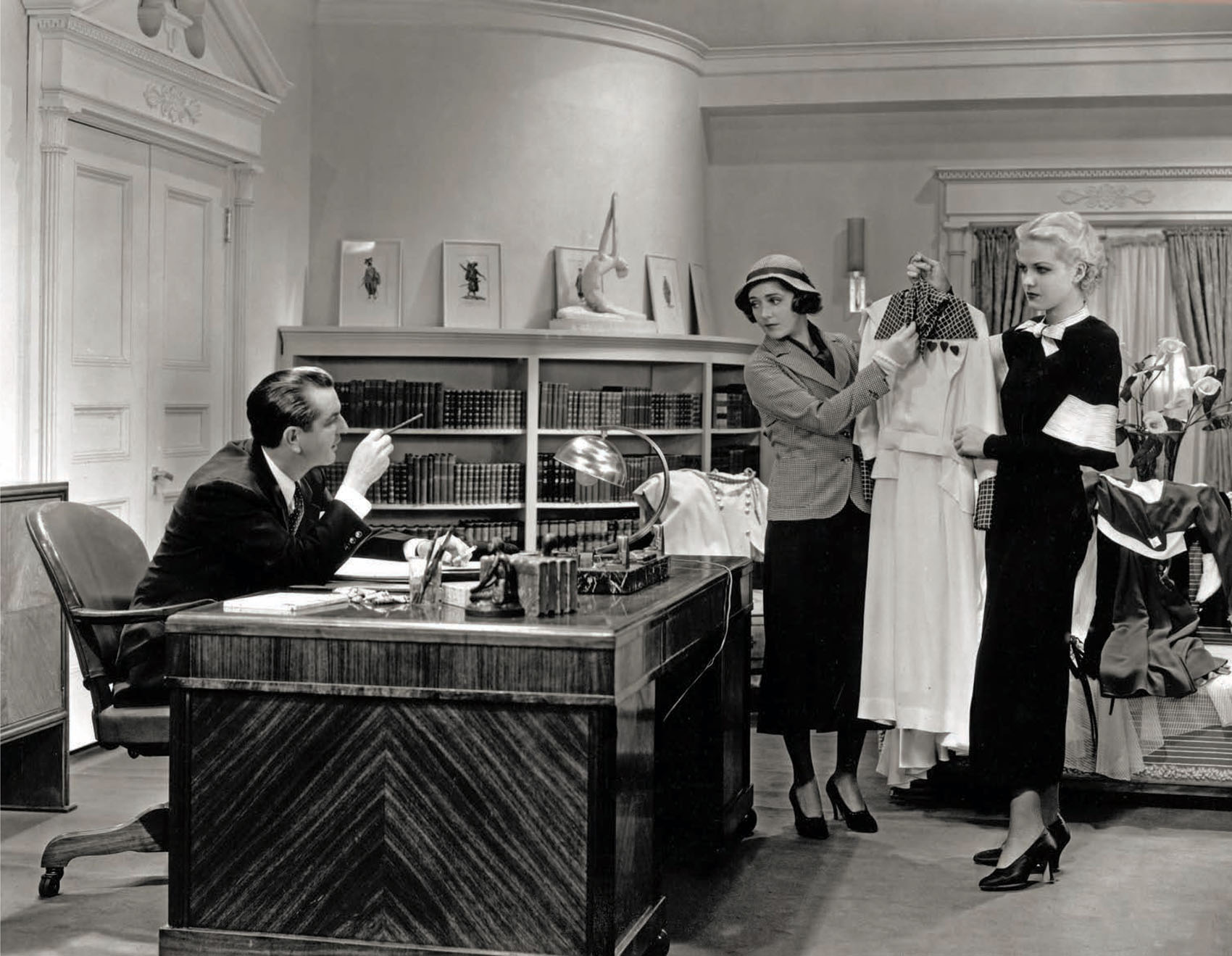
Orry-Kelly (left) confers with Ruby Keeler (center) on the film Go Into Your Dance (1935).
Grant spent his first year in New York with the Bob Pender Circus, where he learned patnomime and acrobatics. “We had a marvelous time that year,” Orry-Kelly remembered. “All of us with our future in front of us like that, and we had already proved that we knew how to cope.” The three made quite a trio. “Cary was straight and I was gay, and no one knew what Charley was,” Orry-Kelly said.
By 1932, Grant had found success in Hollywood, appearing in five movies that year. Meanwhile Orry-Kelly was still back in New York, but he was not getting any work because the Depression had devastated Broadway. Grant prevailed upon his agent, Minna Wallis, to find a designing job for his old roommate. She learned from her brother, Warner Bros. producer Hal Wallis, that his studio needed someone. Orry-Kelly was hired.
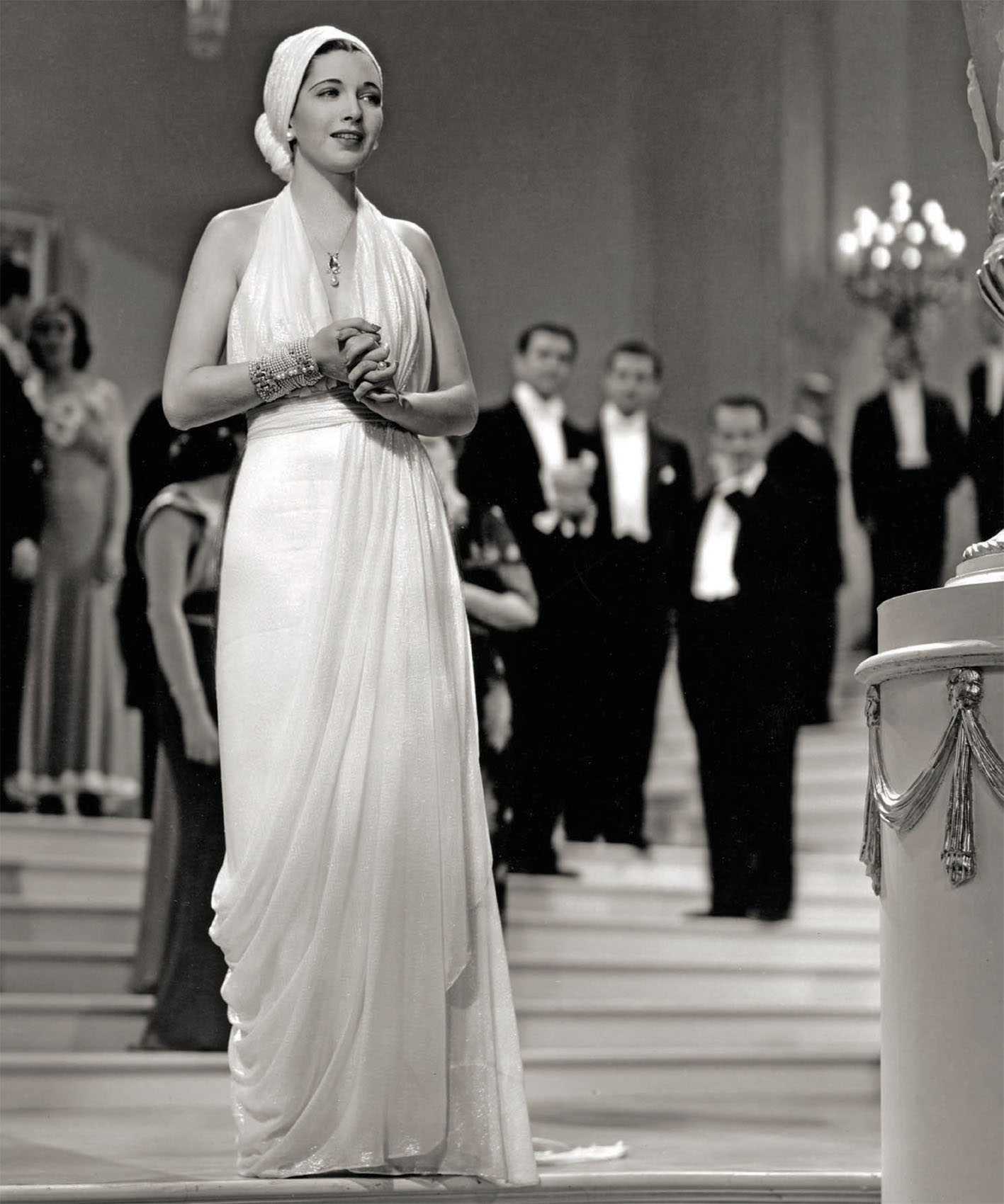
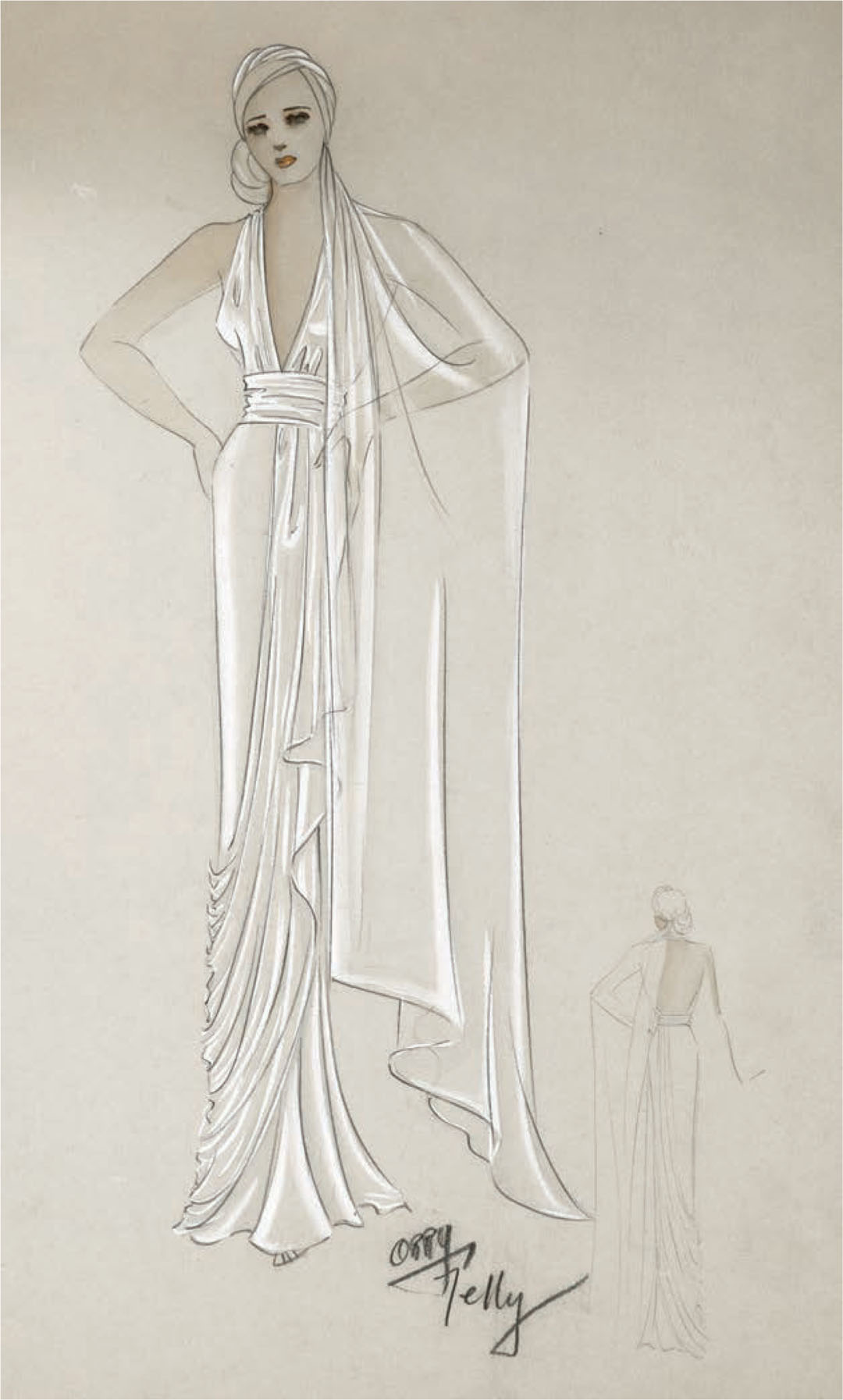
Orry-Kelly design for Kay Francis in Stolen Holiday (1937).
Orry-Kelly moved in with Grant, who was renting a beach house in Santa Monica. Actor Randolph Scott also moved in, though Orry-Kelly only stayed six weeks. To his disappointment, the jovial times he had known living with Grant in New York seemed oddly over, never to be revived.
The actual end to their friendship did not come until a decade later, during the war, according to Orry-Kelly. He had become a U.S. citizen and enlisted in the army. He urged Grant to “do his part,” too. “But he was just starting to earn big money from the films and he begged off the whole issue,” Orry-Kelly said. “Finally the studio had some American general with the USO contact Cary and suggest that he could best do his part by appearing at some canteens and USO shows from time to time. I was shocked by his behavior and told him so, and he tried to have me taken off the picture [Arsenic and Old Lace]. He called the head of the studio and told them I was never to do another one of his films again.” Filmed in 1941 and released in 1944, Arsenic and Old Lace is the only film the former friends ever worked on together.
Who knows why Grant may have tried to boot Orry-Kelly off Arsenic, if it happened at all. Orry-Kelly’s vitriolic indignation at Grant hardly seemed justified, given the realities. In fact, his artful omission of key facts calls the designer’s whole story into question. Grant had become a U.S. citizen on June 26, 1942, a year before Orry-Kelly became an official Yankee on April 23, 1943. Grant had not returned to England to fight, but the British Embassy had instructed all Brits in Hollywood to stay put. Although Grant never put on a uniform, he donated his entire salary from The Philadelphia Story (1940) to the British War Relief Society and his entire salary from Arsenic to the U.S. War Relief Fund, making a combined contribution totaling nearly $4 million in 2015 dollars.
Even without the occasional support and friendship of big stars, Orry-Kelly had ensured his own success with the studios. When he first arrived in Hollywood, Orry-Kelly impressed the powers that be at First National Pictures/Warner Bros. almost immediately. In The Rich Are Always with Us (1932), Ruth Chatterton, one of the reigning queens of the studio lot, was to play the young and sophisticated Caroline Grannard. At the time, the actress was nearly forty. The producer and cinematographer both worried that the wardrobe that the organza- and ruffle-loving Chatterton would be bringing from New York would be wrong for her character. Chatterton surprised both men when she arrived for her wardrobe tests sporting smart clothes that made her look both younger and thinner on camera. They wondered where she had purchased her new wardrobe. “Mr. Orry-Kelly, the new designer in wardrobe, made them especially for me,” Chatterton answered. Simplicity instantly became the hallmark of Orry-Kelly’s designs. His creations were fashionable yet did not exude the theatricality of Adrian, who was being widely copied by other designers at the time.
In addition to being Orry-Kelly’s debut, The Rich Are Always with Us also occasioned his introduction to Bette Davis, who by her own account had arrived in Hollywood only the year before, “a mousy, twenty-two-year-old virgin with knobby knees, a pelvic slouch, and cold blue bug eyes that radiated intelligence.” Davis credited Orry-Kelly’s designs for giving her a certain amount of chic, a quality she did not feel she possessed. That film marked the beginning of a beautiful, albeit tempestuous, relationship between the actress and designer. During her eighteen years at Warner Bros., Davis came to rely on Orry-Kelly to help her build the characterizations for which she became so famous.
On The Little Foxes (1941), Orry-Kelly sided with Davis as she fought with director William Wyler about her excessively opulent wardrobe. Davis starred as Regina Giddens, a member of the South’s aristocracy who resented being denied the financial independence afforded only to men. Wyler instructed Orry-Kelly to dress Davis in the height of Gibson Era fashions, coinciding with the story’s 1900 setting. Davis had already challenged Wyler’s set designs as being too lavish, arguing that they should have been done in a style of decaying grandeur to reflect her character’s diminished lifestyle after failing to inherit family wealth along with her brothers. Davis and Orry-Kelly were in accord that Regina’s clothes would have, as Davis put it, “a certain worn-out look from a few years back.” When Wyler would not compromise, Davis walked off the set in protest, a brave move given that Samuel Goldwyn had paid $385,000 to borrow her from Warner Bros. A week later, Davis relented.
In all, Orry-Kelly and Davis made an astounding total of forty-six movies together during a period of fourteen years. But surprisingly, the two did not like each other. Davis did not like Orry-Kelly as a person, designer Milo Anderson once said. But they needed each other.

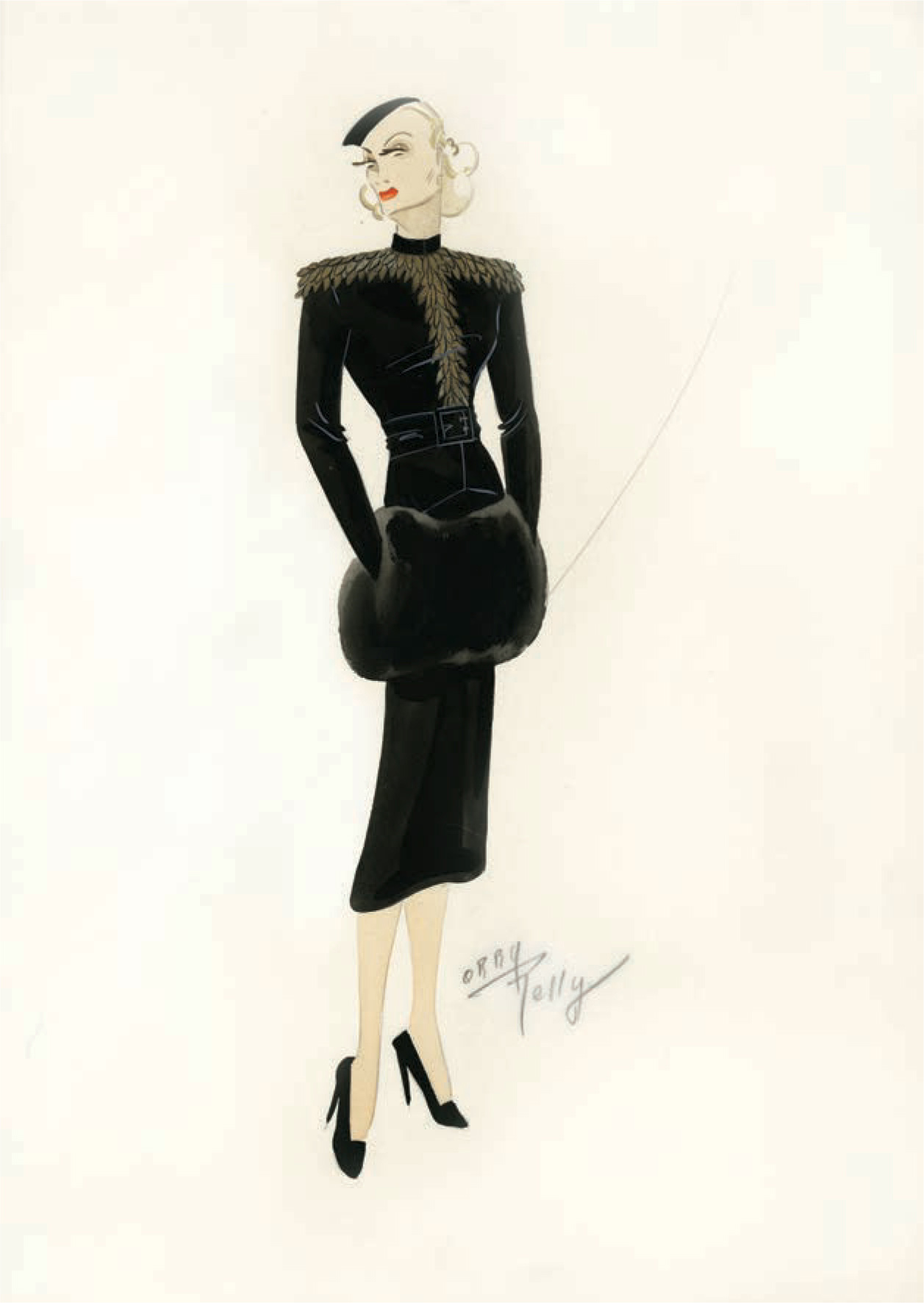
Orry-Kelly design for Bette Davis in Kid Galahad (1937).
“I think of Bette Davis as a period piece,” Orry-Kelly said. “She belongs in costume clothing. Working with Bette isn’t easy, but she’s worth it. She is honest and outspoken. She’s one of the very few actresses I know who can look in the mirror and tell herself the truth. When I’m ready to give up and throw out a dress, she’ll give it a hitch or a twist and turn it into something great.”
Despite the personality clash, Davis ultimately trusted Orry-Kelly to design for her, no matter who she played. Her fearless choice of characters—sometimes playing unsympathetic, contemptuous, or aloof women—enabled Davis to gain acclaim in a range of genres, including historical films, comedies, dramas, romances, and crime tales. When Orry-Kelly left Warner Bros. in 1943, Davis seemed genuinely devastated. “Warner Brothers, for me, without Orry-Kelly was as if I had lost my right arm,” Davis said later. “His contribution to my career was an enormous one. He never featured his clothes to such a degree that the performance was overshadowed.”
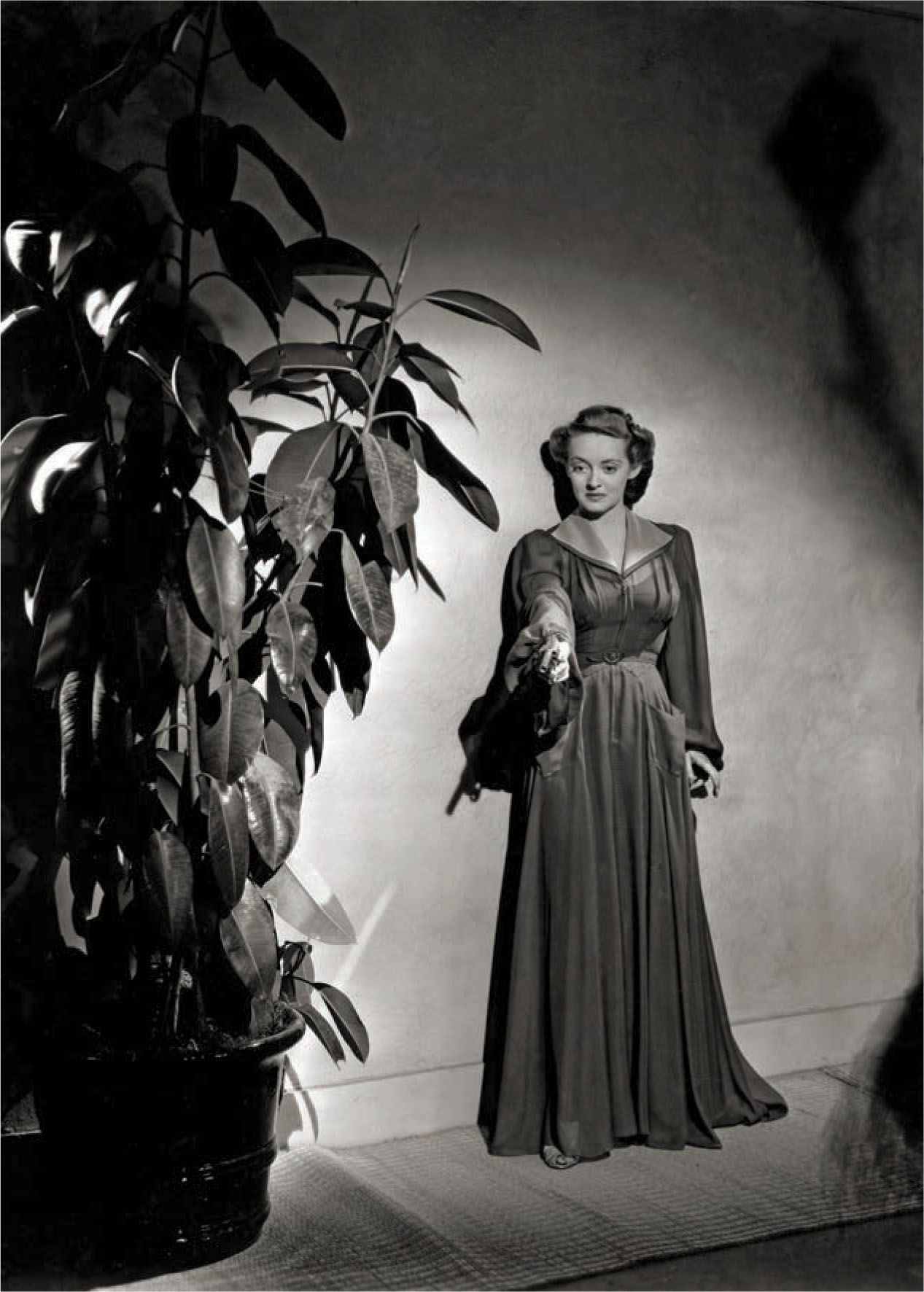
Bette Davis in The Letter (1940).
Although Orry-Kelly’s name will always be linked to Bette Davis’s, he also designed for some of Warner’s classic films without Davis, including The Maltese Falcon (1941) and Casablanca (1942). In the latter film, producer Hal Wallis threw out half of Orry-Kelly’s original designs for Ingrid Bergman before shooting even began. In Casablanca’s source material, an unproduced play titled Everybody Comes to Rick’s, Bergman’s character arrives at Rick’s Café wearing “a magnificent white gown, and a full-length cape of the same fabric. Her jewels are fabulous.” To Wallis, this made no sense. The other characters had escaped Germany with just the clothes on their backs. How could Bergman’s Ilsa Lund or Paul Henreid’s Victor Laszlo have avoided the same misfortune? Orry-Kelly changed his original gown to a simple, white two-piece dress, which David O. Selznick, who was lending Bergman to Warner Bros., preferred. The scaled-down costume did not overshadow Bergman’s beauty. In one of his famous memos, Selznick wrote, “In order for her to look smart, she doesn’t have to be dressed up like a candy box.”
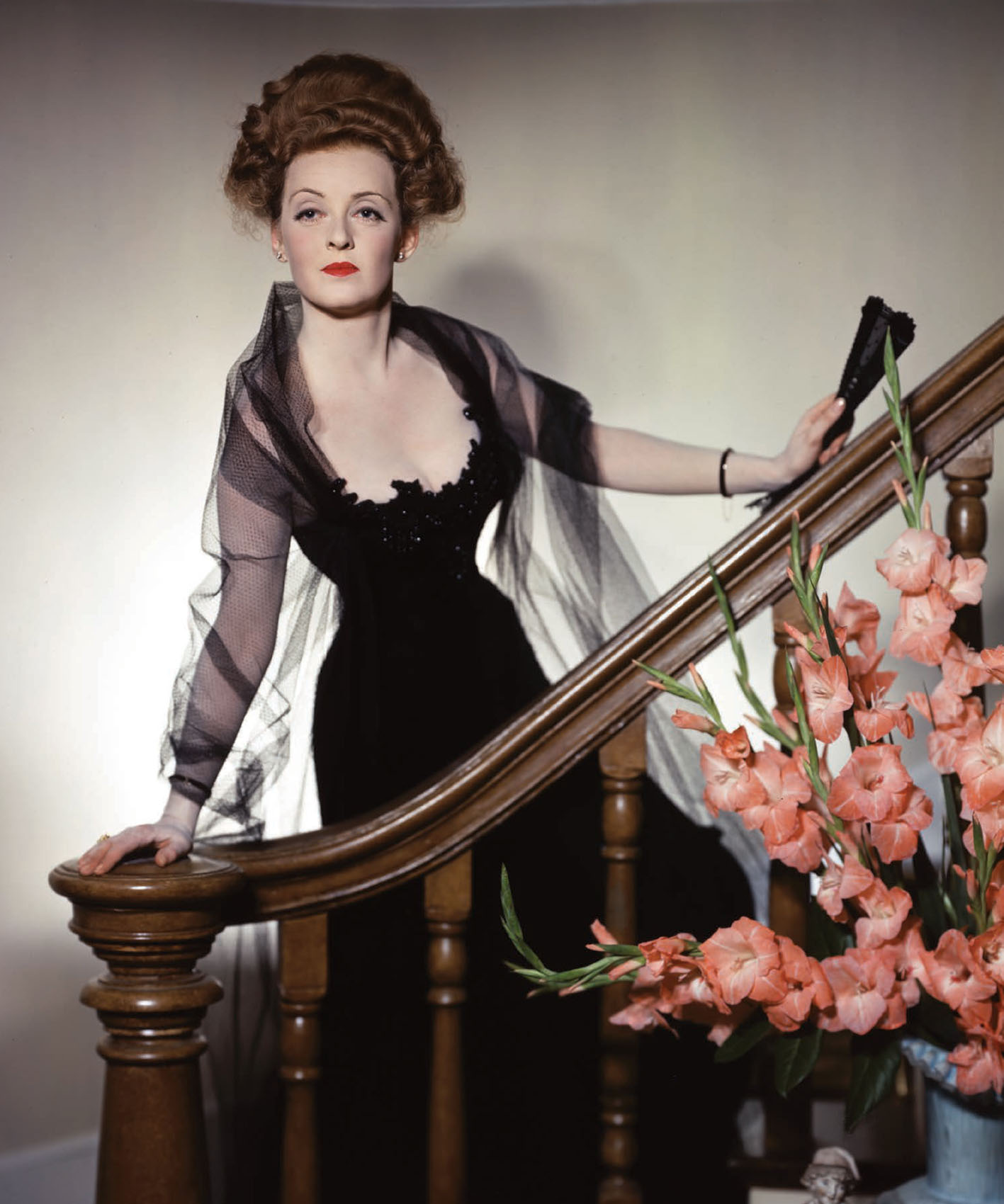
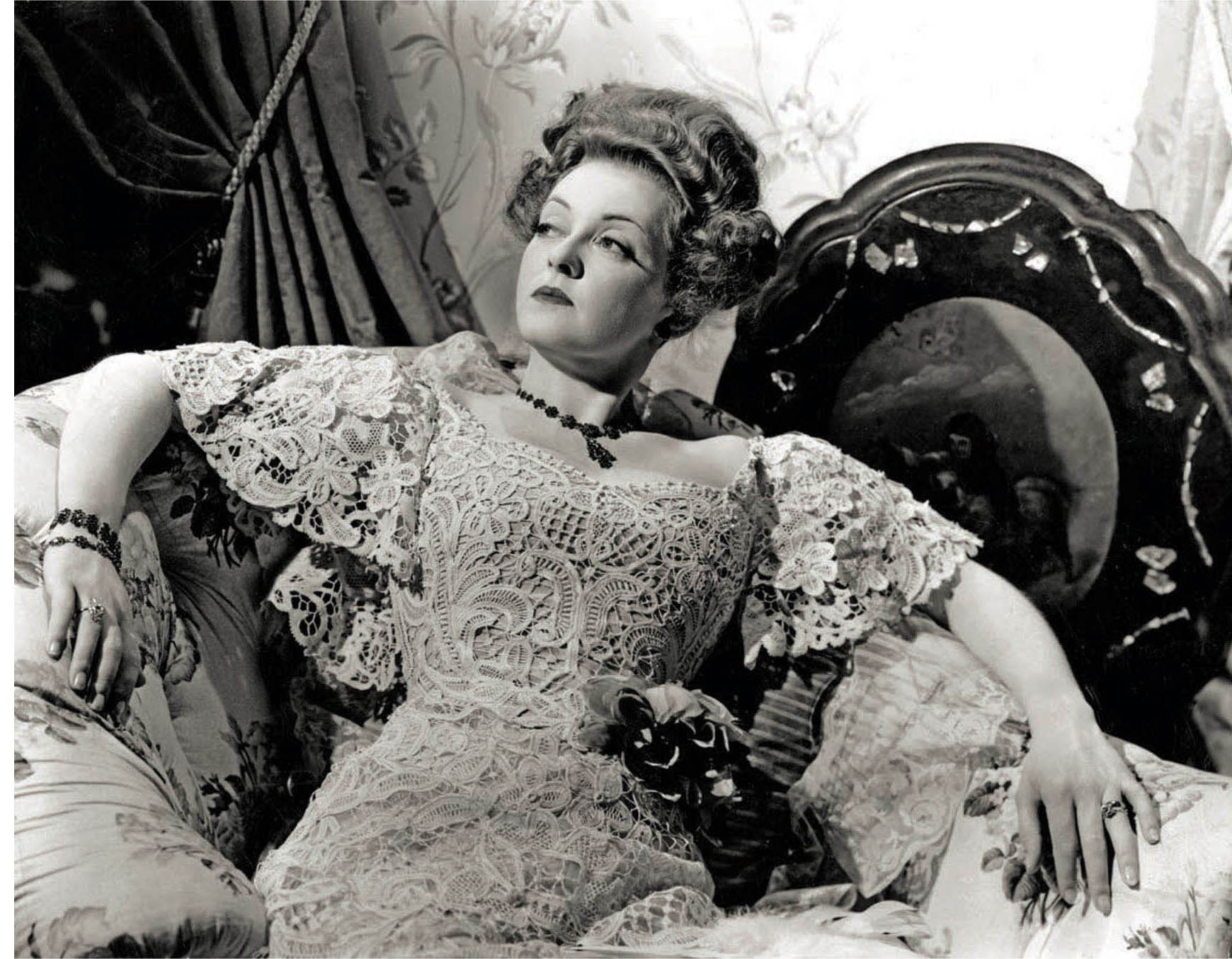
Bette Davis in Now, Voyager (1942).
Orry-Kelly was always an in-demand guest at Hollywood parties, noted for his witty stories and his ability to perform a soft-shoe routine if called upon. Also notorious were Orry-Kelly’s fights with studio head Jack Warner. “I used to tell Orry-Kelly he should have been a prizefighter or gone into vaudeville,” Warner said. “He could be trouble, loved the spotlight, and was stubborn as hell.” The problem with Orry-Kelly was his drinking. “When he had too many drinks, he’d get mean, start swearing and throwing punches,” Warner said. “But he could be a damn nice guy when he wanted to be. His costumes had the one thing I always insisted on in everything—quality. There was quality there. No one else could touch him in that.”
After completing Mr. Skeffington (1944), Orry-Kelly joined the army. Louella Parsons arranged for him to write a column for International News Service called “Hollywood Fashion Parade.” After completing his one-year enlistment, Orry-Kelly returned to the studio to discover he was no longer the cat’s meow. In his absence, Milo Anderson and Leah Rhodes had pleased everyone with their designs. Warner no longer needed to tolerate Orry-Kelly’s outbursts. So when he refused to design for The Doughgirls (1944), Warner fired him. During a farewell drink at his home that evening, Orry-Kelly’s dog bit fellow designer Milo Anderson on the nose. People who had seen the pair leaving the studio the day before assumed Orry-Kelly had punched Anderson in the nose when he showed up at the studio the next day sporting a bandage.
Darryl Zanuck, head of 20th Century-Fox, told his costume supervisor, Charles Le Maire, to make a position for Orry-Kelly at Fox. Le Maire knew that Orry-Kelly had bullied his staff at Warner Bros. Dismayed at being forced to accommodate the cantankerous designer, Le Maire assigned Orry-Kelly to The Dolly Sisters (1945) with Betty Grable and June Haver. Le Maire considered Grable to be difficult, and he believed she and Orry-Kelly deserved each other. Orry-Kelly surprised Le Maire by doing well with the film. Though he returned to Warner Bros. briefly to design nine turn-of-the-century dresses for Davis in The Corn Is Green (1945), Orry-Kelly stayed at Fox until 1947, and then freelanced from 1950 onward at Fox, MGM, United Artists, and Warner Bros. He won three Academy Awards during this time for An American in Paris (1951), Les Girls (1957), and Some Like It Hot (1959).
“He could do the wittiest, naughtiest costumes of anybody,” said Margo Baxley, Orry-Kelly’s driver and an employee of Western Costume. “In Some Like It Hot, they didn’t shoot the full-length of the back of some of Marilyn Monroe’s costumes because they were a little risqué for the times,” Baxley said. “Her black dress had a jet butterfly that quivered right at the crack. Then on a white dress, there was a little open heart etched in blood red beads with a few drops of blood going down right on her shapely behind.” Orry-Kelly’s dresses of nude souffle accented with only a minimum of sequins and beading, which made Monroe look nearly nude, resulted in Some Like It Hot being banned in Kansas and released unapproved by the production office. His designs precluded Monroe from wearing a bra, much to her approval. During fittings, Orry-Kelly used a string tied around Monroe’s legs just under her buttocks to pinpoint exactly where the dress should cling. Monroe was pregnant when she began shooting the film (she later miscarried) and her figure was even more ample than usual.
Orry-Kelly had a trying time designing for Natalie Wood in Gypsy (1962). “What are you going to do for Natalie?” a reporter asked him, alluding to the challenge of designing costumes for a stripper. “What is Natalie going to do for me?” Orry-Kelly quipped. “Many people claim that Gypsy Rose Lee had no talent. I disagree. Becoming the greatest stripper of all-time with a shortage on the bust-line required nothing but talent. That’s what Natalie’s up against.”
Around 1963, he began writing his autobiography, Women I’ve Undressed. The book, which was never published, was not actually about women. He mentions them, but mostly the book was about men. He would start a story about Bette Davis, but digress into a story about how much she hated Errol Flynn. “Orry-Kelly was one of the wittiest, funniest, most delightful men,” Margo Baxley remembers from the three weeks she spent as his driver. “He was writing an autobiography, which for sheer libel possibilities, I’m sure it was burned before read. He would read to me from the proofs, and I was in hysterics. He was extremely indiscreet.”
Women I’ve Undressed was rejected by the publisher because it did not contain enough scandal on Orry-Kelly’s dealings with Marilyn Monroe, Cary Grant, and Bette Davis. Orry-Kelly explained to potential publishers that he was not a “scandal monger” and that the stories in his book were about his private life. When Orry-Kelly refused to make additions, the publishers rejected the manuscript.
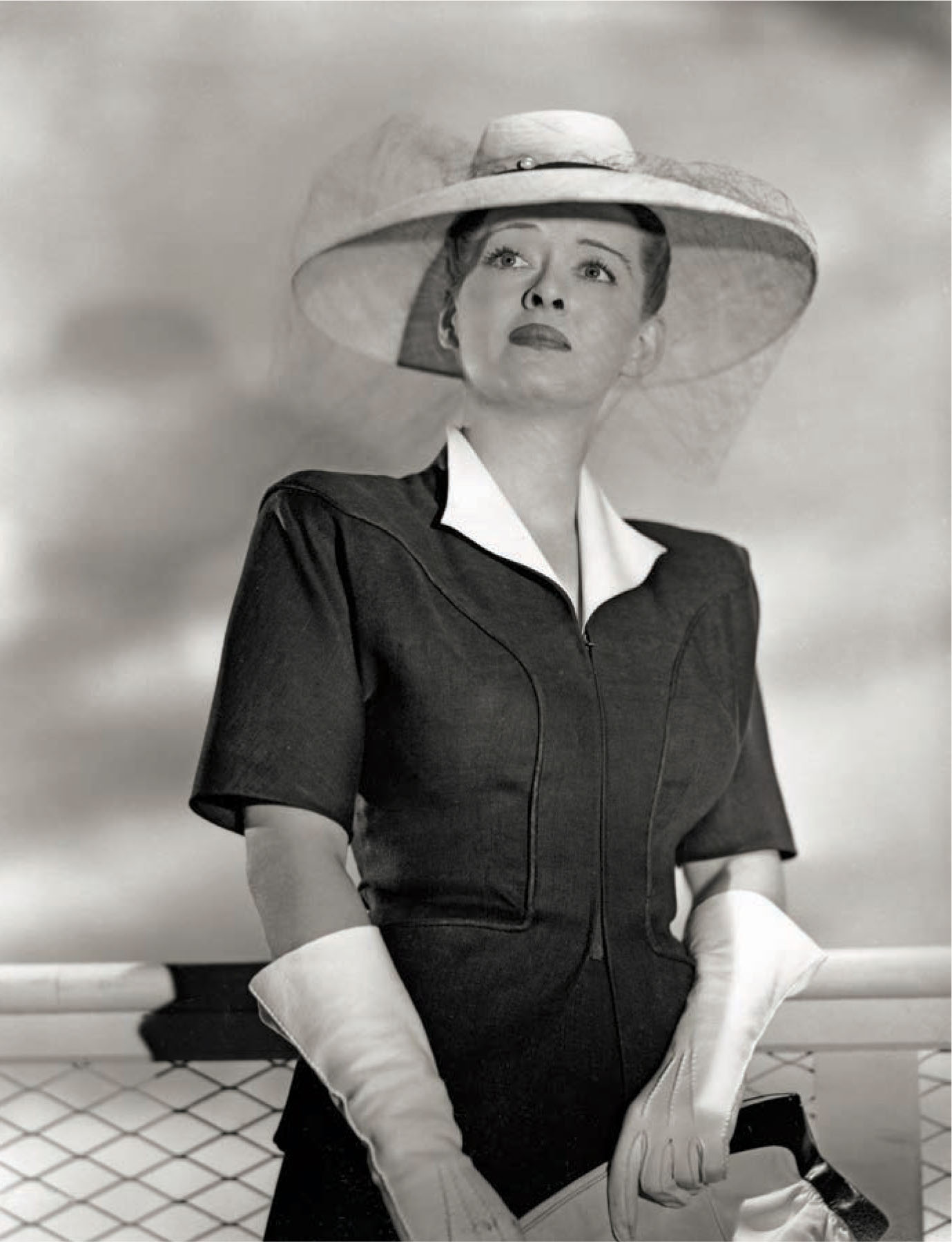
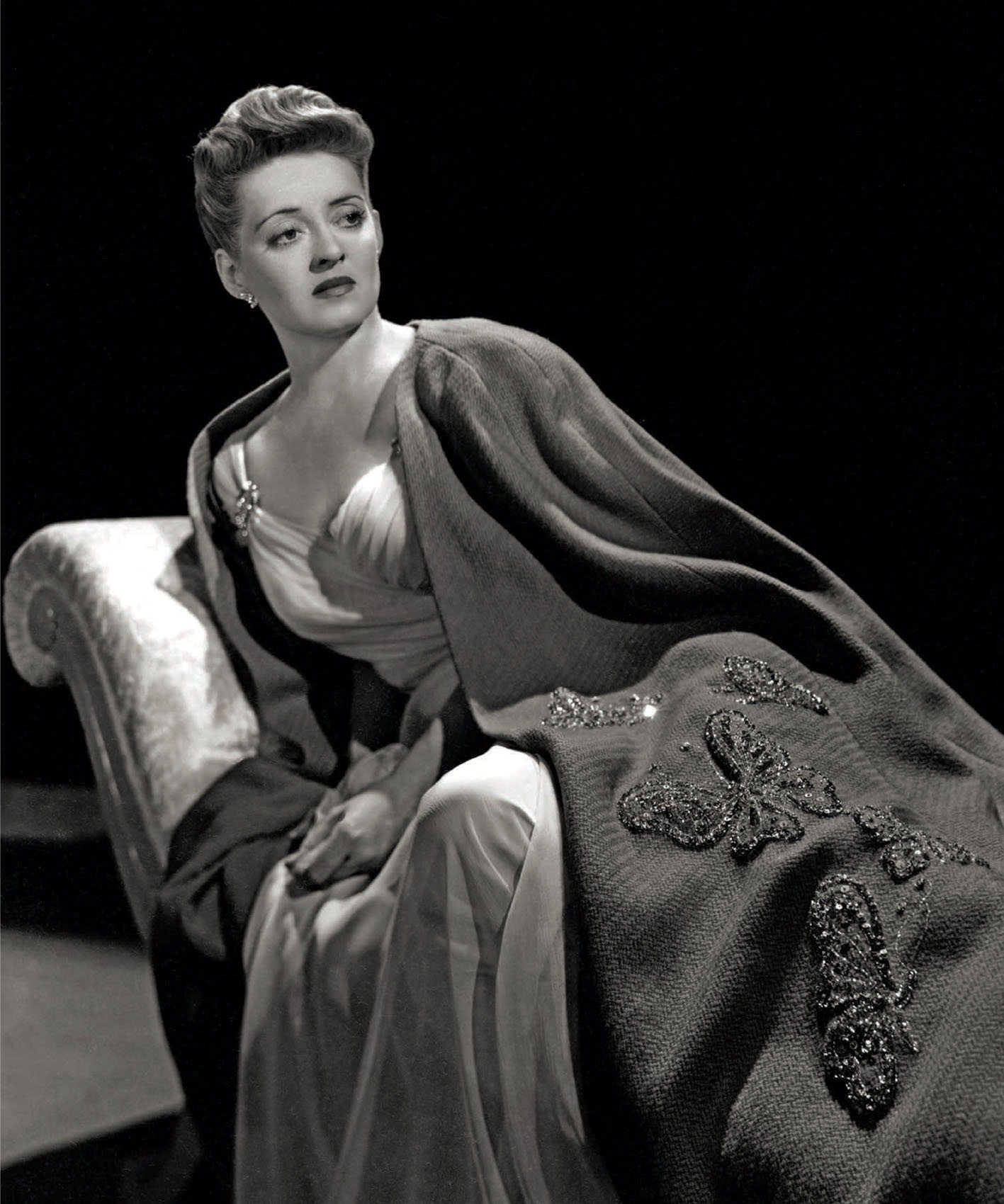
Bette Davis in The Little Foxes (1941).
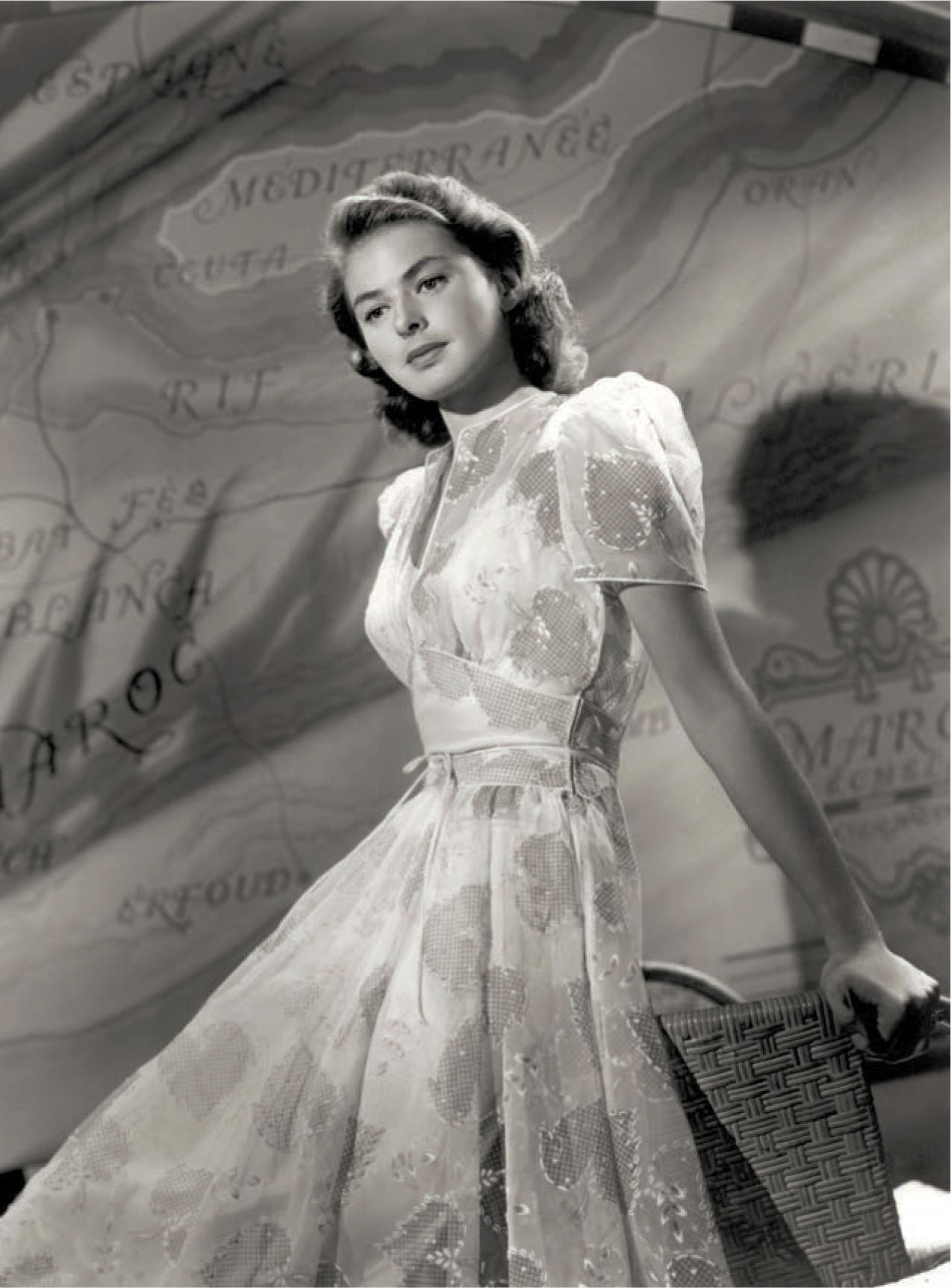
Ingrid Bergman in Casablanca (1942).
Orry-Kelly was designing for Kim Novak in Kiss Me, Stupid when he died in Hollywood on February 27, 1964, of liver cancer. In the days leading up to his death, his friend Ann Warner said Orry-Kelly was in a “blessed coma” and “talking to his old friends Fanny Brice, Ethel Barrymore, and Errol Flynn.” Joan Blondell was one of his last visitors and Orry-Kelly called her by his nickname for her, “Rosebud.”
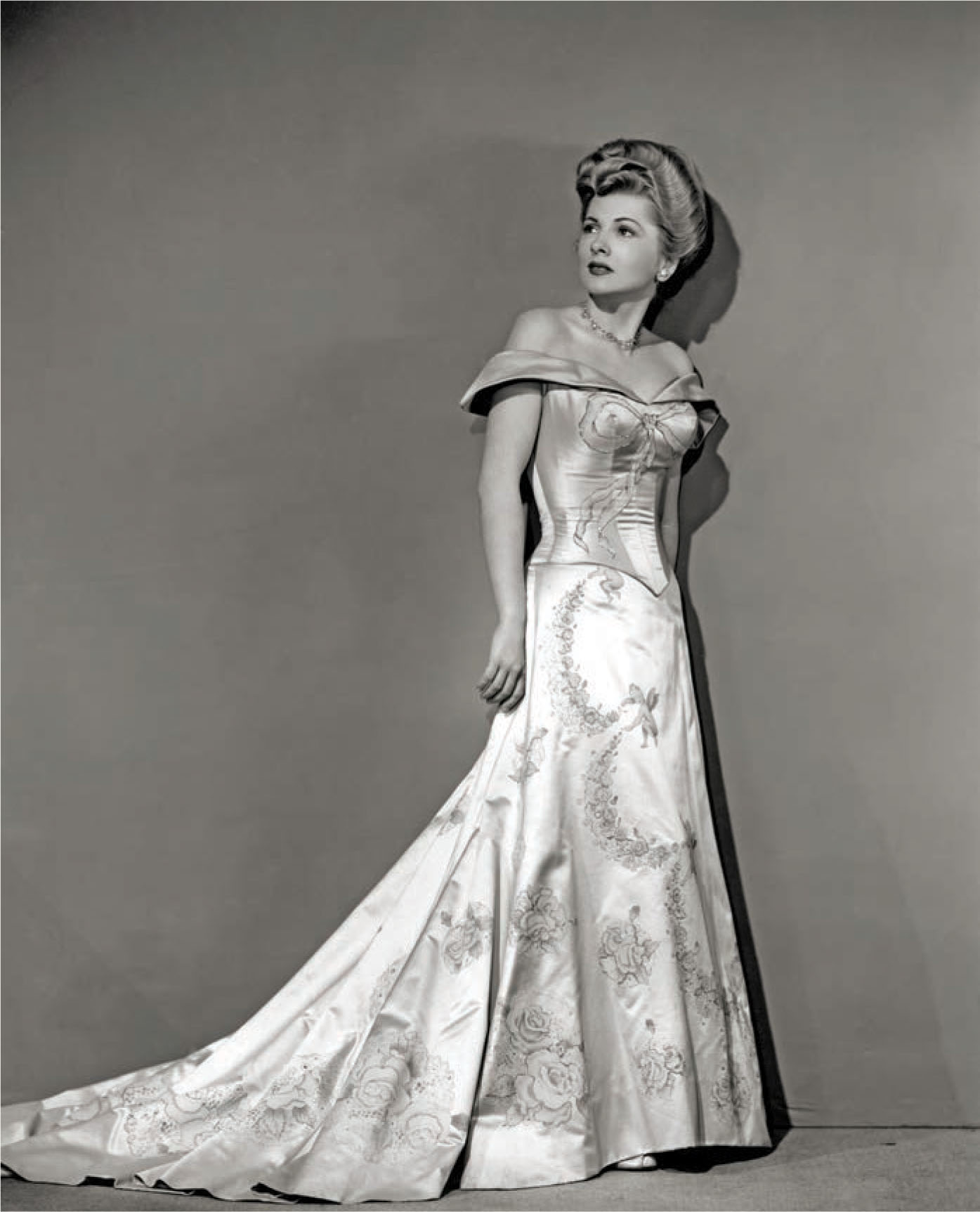
Joan Fontaine in Ivy (1947).
“He made us all more beautiful than any of us had a right to be,” Blondell told the press after his death. His pallbearers included George Cukor, Tony Curtis, Billy Wilder, and, in a last gesture of friendship toward the designer, Cary Grant.
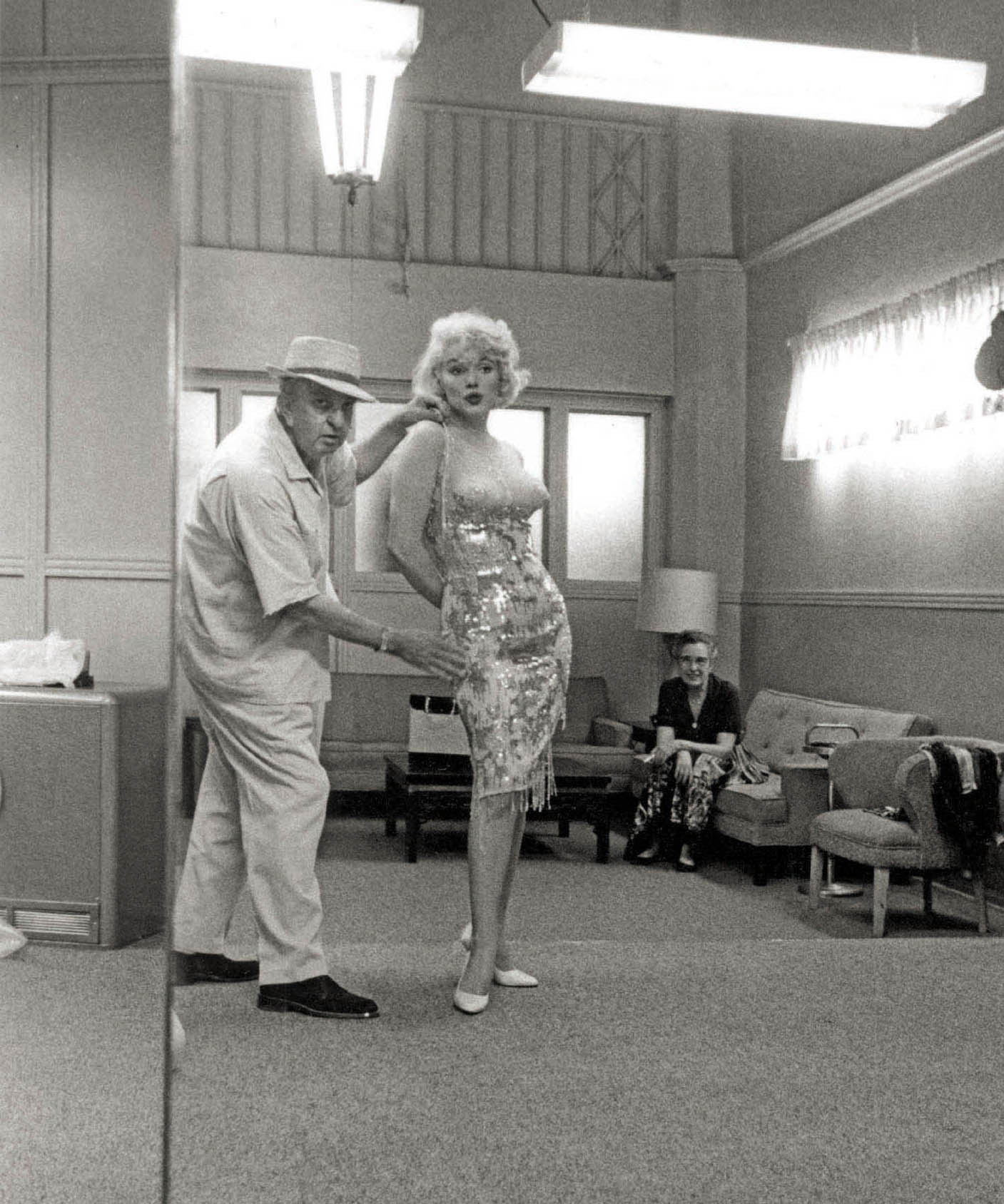
Orry-Kelly fits Marilyn Monroe for Some Like It Hot (1959).
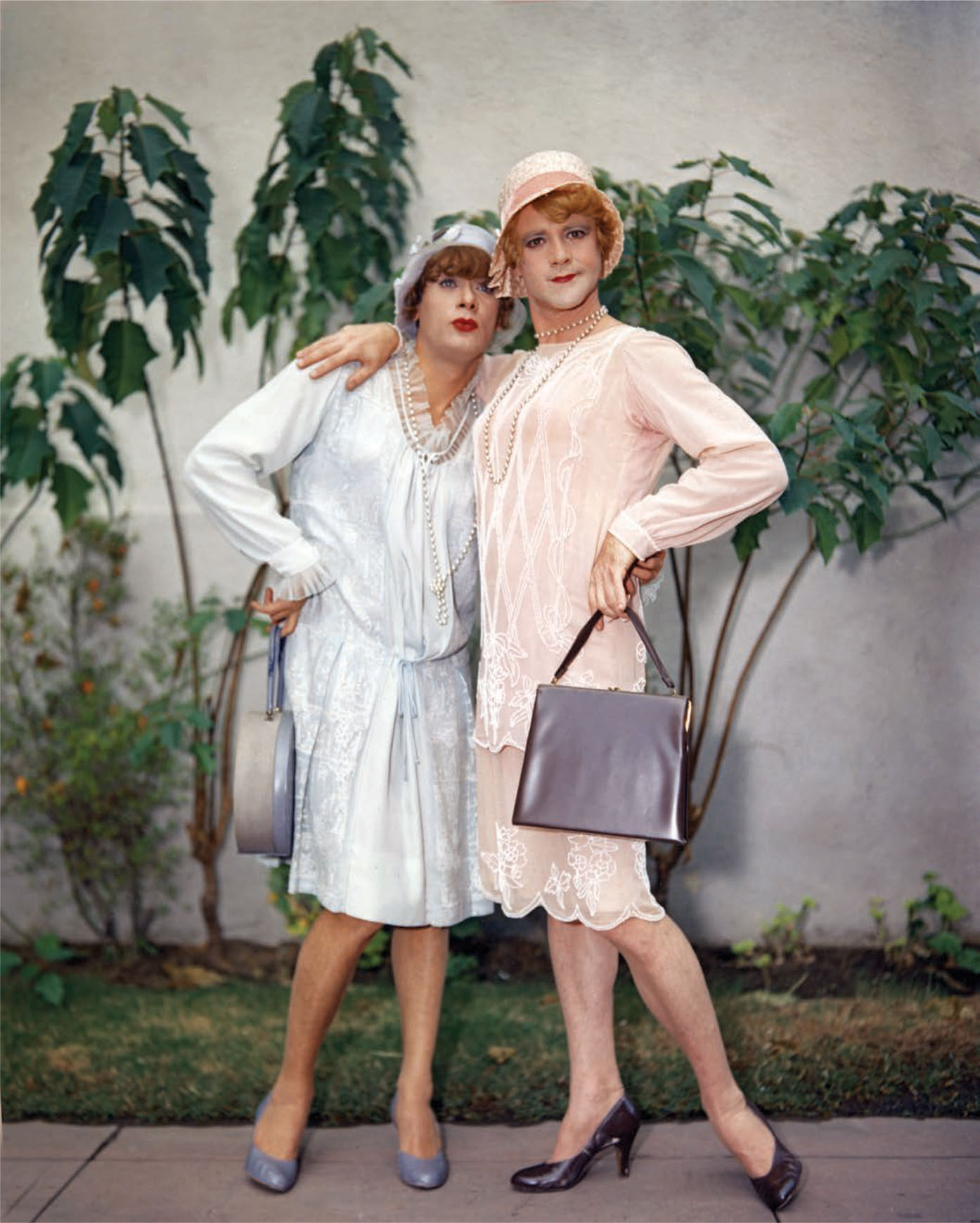
Tony Curtis and Jack Lemmon in Some Like It Hot.
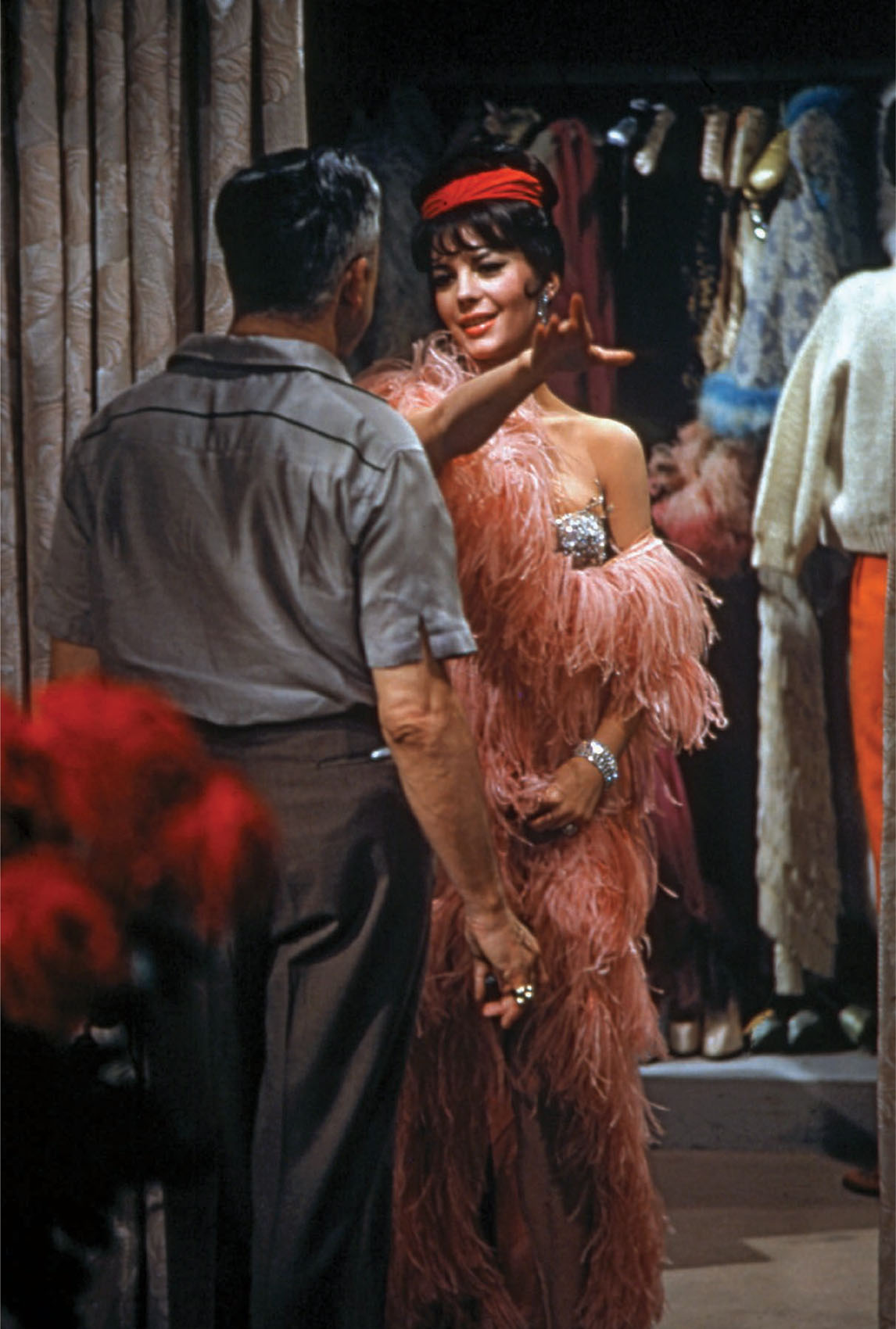
Orry-Kelly confers with Natalie Wood during a fitting for Gypsy (1962).
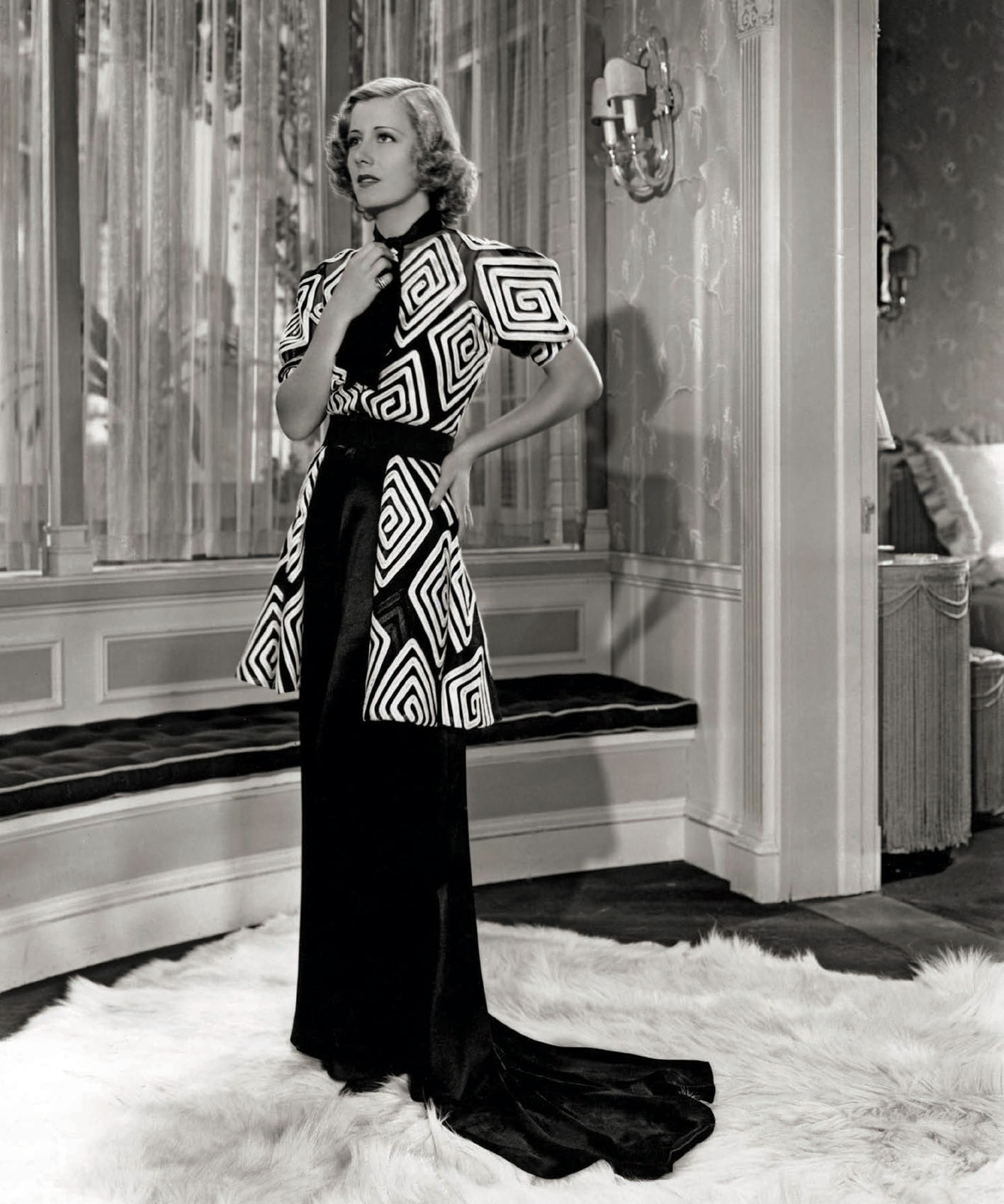
Irene Dunne in The Awful Truth (1937).